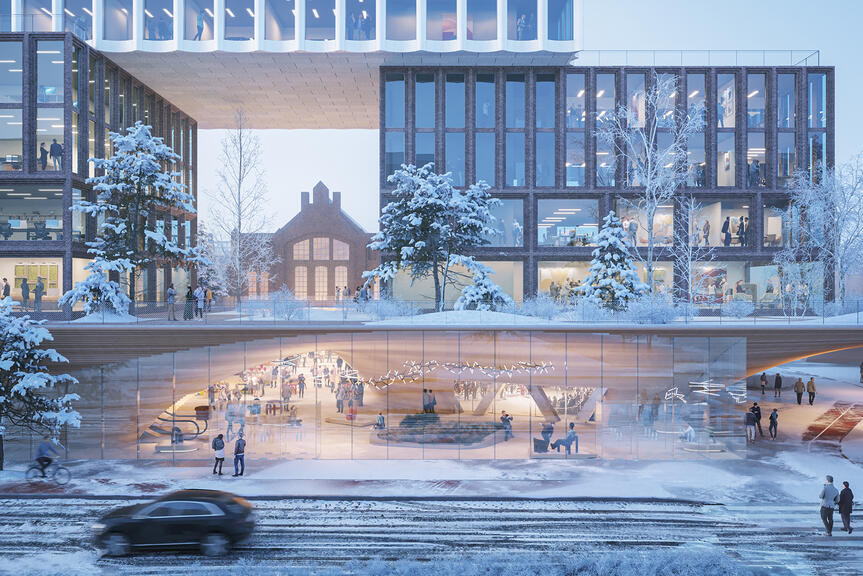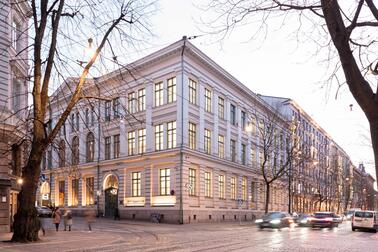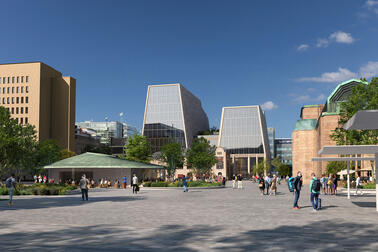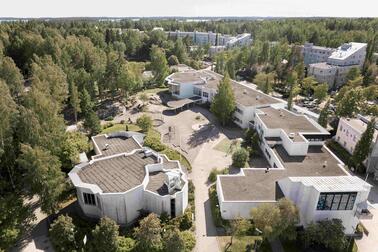
The Pasila Machine Shop Area is currently one of the most interesting areas of urban development in Helsinki. The Machine Shop is a fascinating combination of Finland's industrial history and modern infill development. The Machine Shop Area is already home to apartments, offices, co-working spaces, restaurants, culture and wellbeing, and there is plenty more to come in the near future. The area is bordered by Teollisuuskatu, which is the main street connecting the centres of Pasila and Kalasatama.
In 2018, The Train Factory Oy bought the most central buildings in the area, the Assembly Hall and Paint Shop built in 1899–1910 and designed by Bruno Granholm. The set of historical buildings also includes the former Electric Train Building built in the 70s. The two historical buildings are under renovation and development for modern use, while there are plans to replace the Electric Train Building with a hotel and office facility suitable for headquarters, as well as to create new, versatile functions for the ground floors.
The aim was to find a design solution suitable for the project site with a new, more efficient land use solution that becomes a natural part of the city structure and the area's historically valuable surroundings. At the same time, the new building needs to support the City of Helsinki's goals of developing the Teollisuuskatu axis as a central workplace and downtown area and improving the quality and connections of the area's pedestrian realm.
A total of five architectural agencies were invited to take part in the international competition, held in cooperation with the City of Helsinki and the Finnish Association of Architects (SAFA).
"It's great that the owner decided to hold an architectural competition over this difficult design job. The competition proposals were high-quality, and they fulfilled the purpose of the competition: we got to look at different ways of locating these new functions and architectural modelling on a plot that has a tricky shape and valuable cityscape,” says Rikhard Manninen, land use director at Helsinki Urban Environment Division.
Residents gave over a thousand comments on the proposals
Feedback on the competition proposals was collected using the Voice your opinion service(Link leads to external service) . The most popular proposals were proposal 444044, which consists of gabled components of uniform height, and proposal 271096, which consists of three towers rising in height to the east (40 and 34 percent of the votes, respectively), while the support for other proposals remained at 6–11 percent each. Many responders shied away from large building size and high towers, but on the other hand, towers were also considered to suit this location, though with somewhat lower than proposed height. The responses examined the issue in a versatile manner and considered the architecture, materials, street-level arrangements and connections of the proposals, among other factors.
From the point of view of the cityscape, it is challenging to construct high buildings in this location, but on the other hand, the location requires something beyond a long and monotonous wall of buildings. The most successful solutions managed to create a volume of delicate buildings divided into several parts that bring something new to the street level. However, all proposals had room for improvement, and the judges decided to request clarifications from three teams. All proposals had improved significantly in the second stage.

The inviting street-level area of the winning work appealed to the judges
In the end, proposal 278412, A Roof For Helsinki, was selected as the winning work. Its strong and distinctive design solution connects the Pasila Machine Shop Area with Teollisuuskatu in a new and interesting way. According to the judges, the proposal's active and inviting street-level area − the creation of a more generous public area − best corresponded to the goals of the project, and the proposal had the most potential to create both a new entrance to the Machine Shop Area and a new and attractive location in the city. The judges liked that the proposal placed the spacious hotel in a slender, white tower, which "disappears" into the sky, shading a smaller portion of the street. The winning work was designed by the Portuguese architecture firm MASSLab Porto in cooperation with AFRY & AFRY Ark Studio.
"As the owners of The Train Factory, we recognise our responsibility in developing the area. The historical buildings are a focal part of the industrial history of Helsinki and Finland. The oldest buildings are over 100 years old, and we are already well into renovating and reconstructing them. In addition, the buildings are meant to be the centre of the new Teollisuuskatu axis, both visually and from the perspective of social and cultural life. This underlines the importance of our project for the planning of the entire Vallila area. Next, we will continue preparing the detailed plan in cooperation with the winning team and the professionals of the City of Helsinki,” says Managing Director Cameron Sawyer.
The plans will be further worked on during the zoning process, and they will also be discussed with the city residents and other involved parties. According to the city's goals, there will be more facility and services along Teollisuuskatu, which is developing as a central workplace and downtown area. Along with the new construction, the liveliness of the ground floors and the pedestrian paths will increase, and the significance of the Pasila Machine Shop Area as a dynamic centre for workplaces, culture and events will be reinforced.
Background
- The Assembly Hall and Paint Shop were built between 1899 and 1910.
- There are already businesses operating in the historical section: The Finnish National Theatre's Vallila Stage and Lidl. They will be joined by Wihuri Metro-tukku in 2023.
- The reconstruction and renovation of the historical section will be finished during 2023.
- An international-style restaurant area, wine area, bakery and microbrewery are also on their way to the premises.
- The Assembly Hall and Paint Shop will also have roughly 7,000 k-m2 of a new type of innovative office facility.
- The Electric Train Building, which will be replaced by the new buildings, was built in two phases in 1971 and 1979. Currently, it houses Bille Beino padel courts, the Eagle Club Golf simulator, the Motivus gym and a car park. The size of the Electric Train Building is 4,354 k-m2.
- The property currently has roughly 10,500 k-m2 of unused permitted building area, and the aim of the detailed plan amendment is to increase the total of the permitted building area to to 45,000 k-m2.
- The historical section is carbon-neutral, and it runs on Helen's district heating and cooling. All purchased energy is generated by nuclear power. The option of moving the current Electric Train Building to another location is being investigated.


